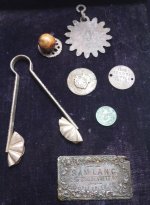Bill D. (VA)
Silver Member
This weekend I was finally able to escape the seemingly perpetual cabin fever mode I'd been in lately after only getting out for one short hunt over the last 5 weeks. I started things off by hooking up with my good friend Joey to make the long trek back to the county that produced the Lord Baltimore sixpence. Joey had recently discovered that the owner of the Lord Baltimore tract was also in control of another nearby land patent site, and we tried to contact him for the go-ahead. But we went by his house 3 different times during the day but could never catch him home. So we were forced to hit an old site, and managed to get into a couple of small, new ones, and didn't get into the production we had hoped for, but we did manage a few keepers. We hope to go back soon and secure permission for the first site as it has high potential based on Joey's research.
I decided to play hooky from church on Sunday, and met up with my buddy Dan for our first hunt since the end of January. Our first stop was at an old site, but one where Dan had ran into a little 1600s hotspot in the woods not long ago. We pounded the area, but in spite of a large field of small iron and brick, we could not pull out any real keepers. We then moved on to another previously hunted site, the one that produced the rattlesnake and stars button on our last hunt there, but things were a bit slow there as well. We then made our way to an adjacent field where we had researched a small 200 acre land patent dating all the way back to 1619, and one that we'd been eyeing for quite some time. After a long walk we came to the narrow peninsula and started noticing brick frags scattered about. We turned our machines on, and I hadn't walked 5 feet when I heard the first signal. It was rather low on the scale, and I wasn't expecting much, but I was shocked when a 1580s Hans Krauwinkle jetton popped out. This is my 4th jetton, and all have come from the very earliest sites so this provided for a little bit of excitement. Dan also made a nice find, but I'll leave that for him to post. At that point we had high hopes for a hammered coin to appear, but the targets were surprisingly few and far between. About halfway into hunting that spot I heard a large, deep iron signal that had the potential to be an indicator for an early trash pit. About 12-18" down I encountered a large iron object, and was expecting it to be a colonial hoe. When I reached down to pull it out I could tell it was obviously not a hoe, but more of a coconut shaped artifact. Dan came over and at first we were puzzled, but then he quickly suggested it just might be a very early sword basket hilt, and after we knocked a little more of the dirt off and saw the intricate designs cut into it we were convinced that's what I had just unearthed. A similar one was recovered from Jamestown a few years ago, and I saw several others like it on the web. From the info I gathered it could date anywhere from the late 1500s to the mid-1600s, and was part of a broad or backsword (single edge blade). Definitely a rare, museum quality piece, and one of the coolest things I've ever dug. I have it in the electrolysis tank now, and hopefully it'll clean up before it falls apart. But its pretty substantial so its got a good chance to survive.
Later we secured another permission for what appeared to be a killer spot - a high flat plateau along a well-know early colonial creek, but it was totally devoid of any period artifacts. At the end of the day we wanted to check out one last spot that we've been wanting to get into, but we found out the owner had moved and the house was vacant. We still decided to make a quick drive back to check out the field, but the soybeans had never been cut. But then we we got involved in an unpleasant situation, and I'll leave that for Dan to explain in his post. When we finally resolved the issue we both agreed it was time to call it a day.
I decided to play hooky from church on Sunday, and met up with my buddy Dan for our first hunt since the end of January. Our first stop was at an old site, but one where Dan had ran into a little 1600s hotspot in the woods not long ago. We pounded the area, but in spite of a large field of small iron and brick, we could not pull out any real keepers. We then moved on to another previously hunted site, the one that produced the rattlesnake and stars button on our last hunt there, but things were a bit slow there as well. We then made our way to an adjacent field where we had researched a small 200 acre land patent dating all the way back to 1619, and one that we'd been eyeing for quite some time. After a long walk we came to the narrow peninsula and started noticing brick frags scattered about. We turned our machines on, and I hadn't walked 5 feet when I heard the first signal. It was rather low on the scale, and I wasn't expecting much, but I was shocked when a 1580s Hans Krauwinkle jetton popped out. This is my 4th jetton, and all have come from the very earliest sites so this provided for a little bit of excitement. Dan also made a nice find, but I'll leave that for him to post. At that point we had high hopes for a hammered coin to appear, but the targets were surprisingly few and far between. About halfway into hunting that spot I heard a large, deep iron signal that had the potential to be an indicator for an early trash pit. About 12-18" down I encountered a large iron object, and was expecting it to be a colonial hoe. When I reached down to pull it out I could tell it was obviously not a hoe, but more of a coconut shaped artifact. Dan came over and at first we were puzzled, but then he quickly suggested it just might be a very early sword basket hilt, and after we knocked a little more of the dirt off and saw the intricate designs cut into it we were convinced that's what I had just unearthed. A similar one was recovered from Jamestown a few years ago, and I saw several others like it on the web. From the info I gathered it could date anywhere from the late 1500s to the mid-1600s, and was part of a broad or backsword (single edge blade). Definitely a rare, museum quality piece, and one of the coolest things I've ever dug. I have it in the electrolysis tank now, and hopefully it'll clean up before it falls apart. But its pretty substantial so its got a good chance to survive.
Later we secured another permission for what appeared to be a killer spot - a high flat plateau along a well-know early colonial creek, but it was totally devoid of any period artifacts. At the end of the day we wanted to check out one last spot that we've been wanting to get into, but we found out the owner had moved and the house was vacant. We still decided to make a quick drive back to check out the field, but the soybeans had never been cut. But then we we got involved in an unpleasant situation, and I'll leave that for Dan to explain in his post. When we finally resolved the issue we both agreed it was time to call it a day.
Attachments
-
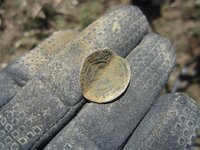 030815a.jpg234.1 KB · Views: 680
030815a.jpg234.1 KB · Views: 680 -
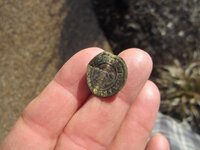 030815b.jpg123.3 KB · Views: 627
030815b.jpg123.3 KB · Views: 627 -
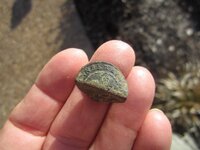 030815c.jpg116.8 KB · Views: 534
030815c.jpg116.8 KB · Views: 534 -
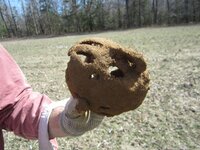 030815d.jpg176.5 KB · Views: 525
030815d.jpg176.5 KB · Views: 525 -
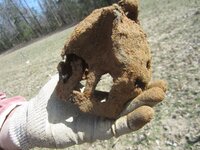 030815e.jpg218.4 KB · Views: 521
030815e.jpg218.4 KB · Views: 521 -
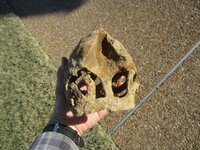 030815f.jpg223.3 KB · Views: 524
030815f.jpg223.3 KB · Views: 524 -
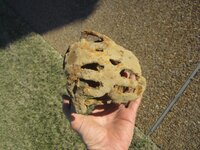 030815g.jpg206.7 KB · Views: 530
030815g.jpg206.7 KB · Views: 530 -
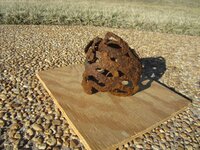 030815h.jpg290.3 KB · Views: 610
030815h.jpg290.3 KB · Views: 610 -
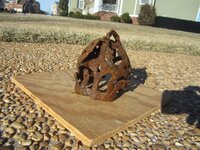 030815i.jpg249.5 KB · Views: 662
030815i.jpg249.5 KB · Views: 662 -
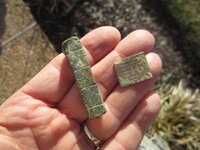 030815j.jpg149.7 KB · Views: 608
030815j.jpg149.7 KB · Views: 608 -
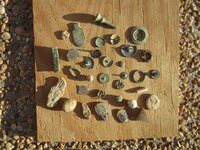 030815k.jpg268.9 KB · Views: 678
030815k.jpg268.9 KB · Views: 678
Upvote
64










